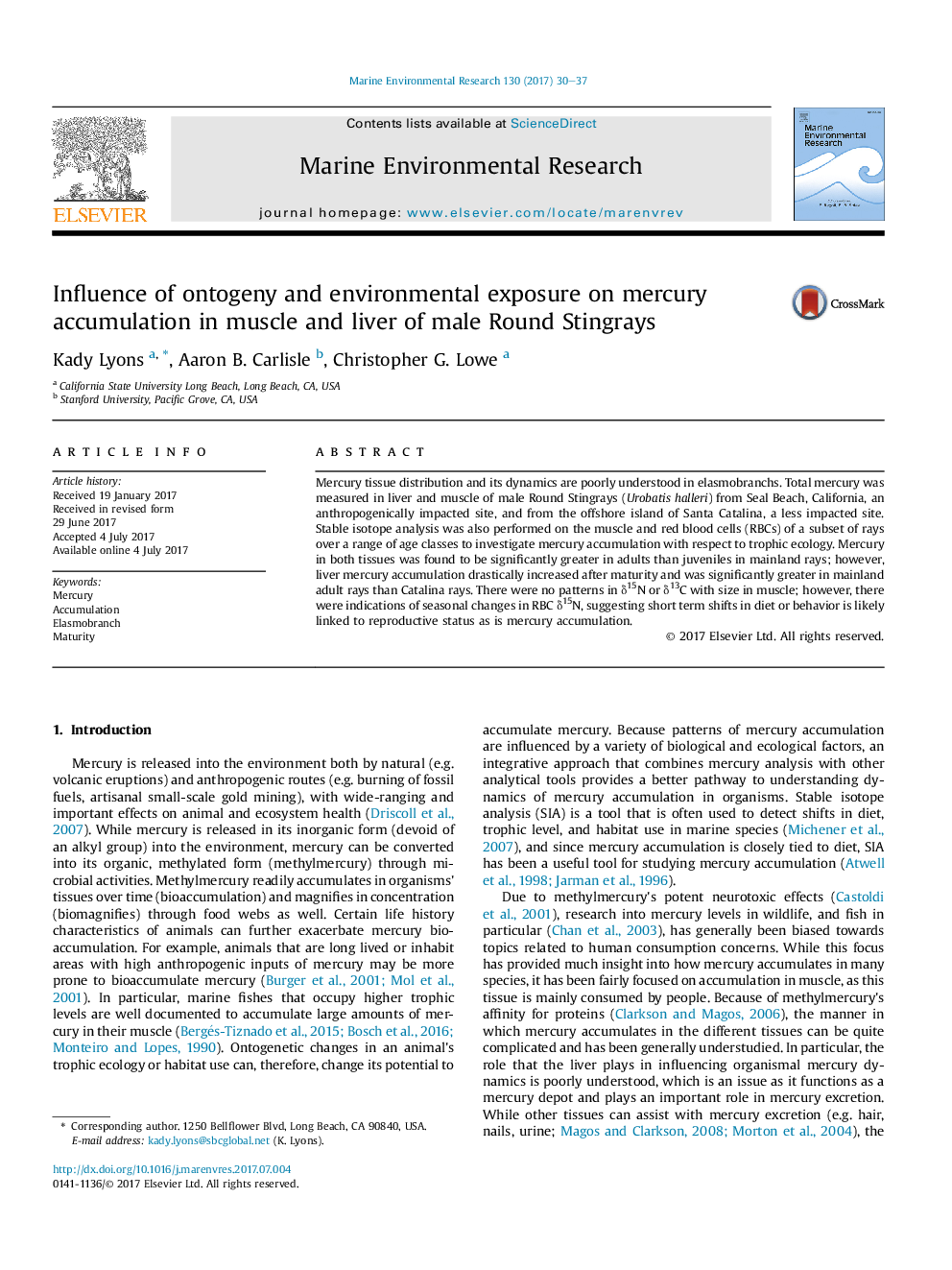| کد مقاله | کد نشریه | سال انتشار | مقاله انگلیسی | نسخه تمام متن |
|---|---|---|---|---|
| 5766140 | 1627553 | 2017 | 8 صفحه PDF | دانلود رایگان |
- Mercury was significantly higher in liver and muscle in adults compared to juveniles.
- Rate of mercury accumulation increased substantially in adult stingray livers.
- Stable isotope analysis indicated that trophic ecology did not change with ontogeny.
- Proximity to anthropogenic activity altered liver mercury in adult stingrays.
Mercury tissue distribution and its dynamics are poorly understood in elasmobranchs. Total mercury was measured in liver and muscle of male Round Stingrays (Urobatis halleri) from Seal Beach, California, an anthropogenically impacted site, and from the offshore island of Santa Catalina, a less impacted site. Stable isotope analysis was also performed on the muscle and red blood cells (RBCs) of a subset of rays over a range of age classes to investigate mercury accumulation with respect to trophic ecology. Mercury in both tissues was found to be significantly greater in adults than juveniles in mainland rays; however, liver mercury accumulation drastically increased after maturity and was significantly greater in mainland adult rays than Catalina rays. There were no patterns in δ15N or δ13C with size in muscle; however, there were indications of seasonal changes in RBC δ15N, suggesting short term shifts in diet or behavior is likely linked to reproductive status as is mercury accumulation.
Journal: Marine Environmental Research - Volume 130, September 2017, Pages 30-37
